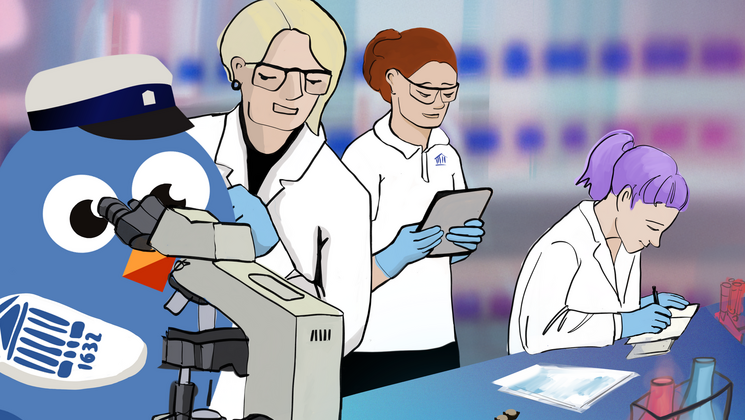-
Faculty of Arts and HumanitiesJakobi 2, r 116-121 51005 Tartu linn, Tartu linn, Tartumaa ESTJakobi 2 51005 Tartu linn, Tartu linn, Tartumaa ESTJakobi 2, IV korrus 51005 Tartu linn, Tartu linn, Tartumaa ESTJakobi 2, III korrus, ruumid 302-337 51005 Tartu linn, Tartu linn, Tartumaa ESTÜlikooli 16 51003 Tartu linn, Tartu linn, Tartumaa ESTLossi 3 51003 Tartu linn, Tartu linn, Tartumaa ESTÜlikooli 18 50090 Tartu linn, Tartu linn, Tartumaa ESTPosti 1 71004 Viljandi linn, Viljandimaa ESTJakobi 2 51005 Tartu linn, Tartu linn, Tartumaa ESTJakobi 2 51005 Tartu linn, Tartu linn, Tartumaa ESTFaculty of Social SciencesLossi 36 51003 Tartu linn, Tartu linn, Tartumaa ESTJakobi 5 51005 Tartu linn, Tartu linn, Tartumaa ESTLossi 36, ruum 301 51003 Tartu linn, Tartu linn, Tartumaa ESTNarva mnt 18 51009 Tartu linn, Tartu linn, Tartumaa ESTNäituse 2 50409 Tartu linn, Tartu linn, Tartumaa ESTNäituse 20 - 324 50409 Tartu linn, Tartu linn, Tartumaa ESTLossi 36 51003 Tartu linn, Tartu linn, Tartumaa ESTRaekoja plats 2 20307 Narva linn, Ida-Virumaa ESTRingi 35 80012 Pärnu linn, Pärnu linn, Pärnumaa ESTLossi 36 51003 Tartu linn, Tartu linn, Tartumaa ESTLossi 36 51003 Tartu linn, Tartu linn, Tartumaa ESTFaculty of MedicineRavila 19 50411 Tartu linn, Tartu linn, Tartumaa ESTBiomeedikum, Ravila 19 50411 Tartu linn, Tartu linn, Tartumaa ESTNooruse 1 50411 Tartu linn, Tartu linn, Tartumaa ESTL. Puusepa 1a 50406 Tartu linn, Tartu linn, Tartumaa ESTL. Puusepa 8 50406 Tartu linn, Tartu linn, Tartumaa ESTRavila 19 50411 Tartu linn, Tartu linn, Tartumaa ESTUjula 4 51008 Tartu linn, Tartu linn, Tartumaa ESTRavila 50411 Tartu linn, Tartu linn, Tartumaa ESTRavila 19 50411 Tartu linn, Tartu linn, Tartumaa ESTFaculty of Science and TechnologyVanemuise 46 - 208 51003 Tartu linn, Tartu linn, Tartumaa ESTNarva mnt 18 51009 Tartu linn, Tartu linn, Tartumaa ESTRiia 23b/2 51010 Tartu linn, Tartu linn, Tartumaa ESTRavila 14a 50411 Tartu linn, Tartu linn, Tartumaa ESTNarva mnt 18 51009 Tartu linn, Tartu linn, Tartumaa ESTRiia 23, 23b - 134 51010 Tartu linn, Tartu linn, Tartumaa ESTObservatooriumi 1 61602 Tõravere alevik, Nõo vald, Tartumaa ESTNooruse 1 50411 Tartu linn, Tartu linn, Tartumaa ESTJ. Liivi tn 2 50409 Tartu linn, Tartu linn, Tartumaa ESTVanemuise 46 51003 Tartu linn, Tartu linn, Tartumaa ESTVanemuise 46 51003 Tartu linn, Tartu linn, Tartumaa ESTArea of Academic SecretaryLossi 3 51003 Tartu linn, Tartu linn, Tartumaa ESTUppsala 6, Lossi 36 51003 Tartu linn, Tartu linn, Tartumaa ESTArea of Head of FinanceÜlikooli 17 51005 Tartu linn, Tartu linn, Tartumaa ESTArea of Director of AdministrationÜlikooli 18A (III korrus) 51005 Tartu linn, Tartu linn, Tartumaa ESTÜlikooli 18, ruumid 102, 104, 209, 210 50090 Tartu linn, Tartu linn, Tartumaa ESTArea of Vice Rector for ResearchW. Struve 1 50091 Tartu linn, Tartu linn, Tartumaa ESTArea of Vice Rector for DevelopmentNarva mnt 18 51009 Tartu linn, Tartu linn, Tartumaa ESTVanemuise 46 51003 Tartu linn, Tartu linn, Tartumaa ESTLossi 25 51003 Tartu linn, Tartu linn, Tartumaa ESTArea of RectorArea of Vice Rector for Academic AffairsUppsala 10 51003 Tartu linn, Tartu linn, Tartumaa ESTÜlikooli 18b 51005 Tartu linn, Tartu linn, Tartumaa EST
Biological plant growth stimulator improves soil quality and combats pests

Researchers from the Chair of Genetics at the Institute of Molecular and Cell Biology have launched a new two-year project titled “Biological Plant Protection Product,” funded by the European Union Structural Funds through the circular economy programme, with support from the Centre for Environmental Investments.
Vinasse is a by-product of yeast production – a concentrate obtained from the yeast growth medium through vacuum evaporation. It is currently used as an organic fertilizer in agriculture, but not yet for the production of biological plant protection products. The aim of the project is to explore how to develop a product using yeast production residues – a biological plant growth stimulator.
Soil is one of the most important limited resources and plays a crucial role in carbon storage on Earth. The strategies adopted in European Union legislation aim to reduce pesticide use by 50% and focus on the development of organic farming. One promising approach in this context is the development of biological control agents. Anne Menert, a researcher at the Chair of Genetics of the Institute of Molecular and Cell Biology, has previous experience working with strains of the fungal genus Trichoderma. Trichoderma is also suitable for use as a biofertilizer and biostimulant, as this genus produces secondary metabolites and enzymes with antimicrobial properties, is capable of rapidly colonizing the rhizosphere, and is tolerant to various environmental factors.
In addition, our scientists have expertise and experience in exploring the potential applications of the well-studied soil bacterium Pseudomonas putida.
The second goal of the project is to improve the properties of compost using fungal and bacterial strains. This involves mixing sewage sludge from production facilities or other suitable substrates (such as cereal waste) with selected representatives of fungal and bacterial genera. The result is an enhanced compost that could replace high-carbon-footprint peat, which is currently extracted from peatlands for use in seedling cultivation. Although peatlands cover only about 3% of the Earth's surface, they store twice as much carbon as all the world's forests combined. One hectare of peatland emits 10–30 tons of carbon dioxide into the atmosphere annually. Estonia aims to promote the preservation of wetlands and their role in carbon sequestration. Additionally, in the the improved compost mixture, the content of nutrient can be increased.
The development of a biological plant growth product involves reviewing relevant scientific literature, planning pot experiments, and testing the formulation itself. The preliminary results of the project are expected by the end of 2026.
Read more similar news






